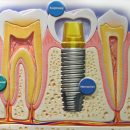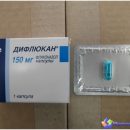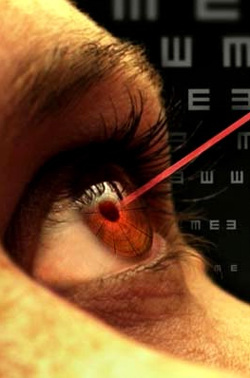
Laser correction as a method of vision recovery appeared relatively recently. Initially, he did not bring due results, but in the future some refinement allowed to improve the method and increase its effectiveness. Statistics says: Only in 5% percent of cases, patients need a re-operation, the rest are satisfied with the result for long years.
Laser vision correction is effective only at the appropriate level of doctor's qualifications. Therefore, it is advantageous, going to the clinic consultation, it is useful to know about the operation itself, indications and contraindications to it, as well as about those moments that will help assess the level of the clinic and the qualifications of the doctor in particular.
Indications
First of all, it should be remembered that the laser correction of vision is precisely correction, and not treatment. That is, it replaces glasses or lenses, but it is not possible to stop the fall in the fall - except for those cases when the vision on one eye drops due to the fact that the second is practically not working.
The main indications are stable (!) Myopia or hyperopia, it is also possible in combination with astigmatism (or mixed astigmatism). Correction is possible at myopia to -10.0 diopters, hyperopia to +6.0 diopters, astigmatism up to 4.0 diopters. Our site would like to note that individual exceptions are possible, but then it is not about full, but about partial recovery. With more significant violations in vision, they are advised to replace the lens or other methods of treatment.
Especially the method of laser correction of view is shown by those who have problems with contact lenses (for example, due to professional activities - military, firefighters, chemical production and T.D.); Those who have a problem with only one eye (then the second, forced to work for two, is constantly overwhelmed).
Contraindications
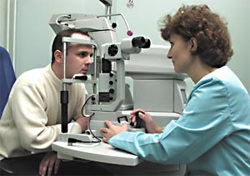
Despite the widely advertised advantages of laser correction, it is not suitable for everyone.
First, our site will pay attention to those who do not need it in principle. About people with healthy vision speech certainly. It makes no sense to carry out laser correction to children up to 18 years old - their eyes are still growing, changes, and most importantly - no one can predict with sufficient accuracy as precisely. Next category - Older people who needed reading glasses. The fact is that changes in this kind are related to the fact that the crystal loses the ability to accommodate (that is, the ability to switch the focus between close and distant objects) - that is, even if you even make a laser correction, the general situation does not greatly improve - the patient will lose the opportunity to see Remote objects.
Border between «not necessary» and «it is forbidden» Case is pregnancy. No need - because at this time there is a hormonal restructuring of the body, and on her background the shape of the eyeball can change. It is impossible - because somewhere about a year after surgery, strong loads on the body are contraindicated, and the births are such.
There is also a set of cases when laser correction cannot be carried out because quite high risk of complications. These are the pathology of the cornea (keratoconus, thinning), cataract, glaucoma, rapidly progressive myopia (or hyperopia, astigmatism), infectious eye diseases (for example, conjunctivitis) in the days of correction, Autoimmune diseases, Single eye, fresh-controlled retinal detachment.
Some clinics are also not taken for patients with diabetes or pacemaker - because there is a likelihood of common complications. Such questions should be solved individually.
Patients are not allowed to laser correction and in the event that vision deviations have evolved over the past 12 months. You may be offered to first treat your eyes in the clinic (remove inflammatory processes, «Sharp» Laser retina and t.D.) - and only after that (after some time) make correction. Medicine continues to develop, so every year more and more absolute contraindications are moving into a category «Let's first catch it, and then we will make correction».
How to choose a clinic
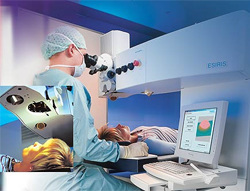
First of all, attention should be paid to the reputation of the clinic, its work experience and willingness to help you, if you have complications in a few years. A good clinic will definitely provide a guarantee if not the result, then at least that in the case of complications you will receive assistance. The best in this place - large centers with many years of experience.
The following criterion is our own research and the amount of funds spent on the purchase of modern equipment (good clinics do not hide such data). But here our site would like to dissuade you: do not hurry to become the first patient for new equipment - it is better if the clinic has to have statistical data on the effectiveness of its use in his own practice.
You can also pay attention to the clinic staff - if it is really good, hardly its staff will use the glasses.
What to choose is a famous major center or a small cozy private clinic? For classical cases, no side diseases are more convenient than small clinics - they pay more attention to a specific patient, the psychological component is better developed better. It is only necessary to pay attention to the history of this particular clinic, as well as the qualifications of its specialists. If you have a more difficult case - it is better to immediately contact a major scientific institution of the relevant profile. It is possible that it is there for you and send you from your parent, if you have a difficult case.
And in any case, ask the qualifications not «Clinics at all», and a particular doctor who will operate you.
How it works
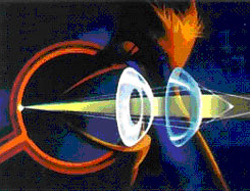
To understand exactly how the laser correction restores vision, you need to remember the structure of the eye. Without going into details, the eye is something like an ordinary camera - instead of a film - retina, instead of lens - a lens, which can change its curvature, focusing the image exactly on the retina. This is ideal.
If the eye is nearlyruk, then the image focuses before the retina, if the far-hotbed - behind it. With astigmatism, the refractive strength of the lens is simply not the same for different parts of the visual field - and the part of the image falls before the retina, and the part is behind it.
Classic (non-laser) methods for correcting such states are reduced to the fact that another lens (glasses or contact lenses) is introduced into the optical system so that the total parameters correspond to healthy (that is, the image focused on the retina). With laser correction, such a lens is essentially cut out of the patient's own cornea, and thus always stays with it.
Laser correction techniques
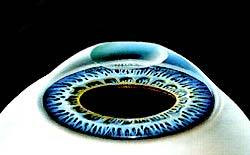
There are several different laser correction techniques.
PRK (FRK - photorefractive kerattectomy) - the first historically emerging method of laser vision correction. Lies in the dosage evaporation of the part of the cornea with the help of an excimer (cold) laser. Laser Actions are managed by a computer program. After surgery, the surface layer of the cornea heals for 1-3 days after the operation, the new optical curvature is formed, and the patient acquires a new vision - but the recovery period cannot be called a pleasant. In addition, both eyes need both eyes in vision correction, then the operation on the second eye is carried out only after a rehabilitation period for the first (usually a few days), so if there is a possibility, now prefer other techniques.
Lasik (Lasik) - (Lasik, Laser-Assisted in situ keratomileusis) - Laser keratomy. In this case, the operation is carried out in two stages. First a special tool - the micro-coheter is separated by the flap of the cornea (somewhere on 1/4-1 / 3 thickness), but not fully separated - it remains «leg». The flap is rejected to the side, and at the next stage the inner strata of the cornea smoothed the laser in accordance with the computer program. Then the flap rests on its place again, and after a few minutes after the operation begins to grow.
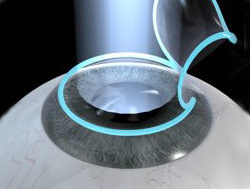
The advantages of the method is that due to the integrity of the external layers of the cornea, the recovery period reduces maximum to 24 hours, the patient does not have discomfort. This makes it possible to adjust the view of both eyes in the same day. Disadvantage - if there are complications, then quite serious because the deep layers of the cornea will be touched. Therefore, much depends on the qualification of the surgeon and on the sterility of the operating. Especially critical for this method thickness of the cornea - if it is insufficient, you recommend another method of laser correction.
Super Lasik - The same as Lazik, but with a more detailed program - not only myopia-farnicity-astegmatism, but also more local and minor aberrations (measured using a special device). Purpose: bring vision to the theoretical ideal. The problem is that local aberrations are unstable - and then their correction may be unnecessary.
Rica - Same as Lasik. The difference in several small technical «know-how». Another name is just an advertising move.
Epi-Lasik (Lask) - (Lasek, Laser Epitheliale Keratomileusis) - the same as Lazik, with the difference that the flap is formed not from the cornea, but only from her epithelial layer. Thus, the membrane Bowman remains intact, and the risk of complications is reduced.
In addition to the advantages and disadvantages, each procedure has its own testimony depending on the state of your vision. The FRK method allows you to conduct vision correction in myopia (up to -6.0 diopters), hyperopia (up to +3.0 diopters), astigmatism (up to 3.0 diopters). The Lasik method and it can restore vision and at large deviations: up to -10.0 diopters - at myopia, up to +6.0 - with farnicide and 4.0 diopter at astigmatism. Exception only for the method of Lasen, he has indications for operation at myopia and hyperopia to -8.0 and +4.0 diopter, respectively. In each case, it is possible to use a particular operation when deviating beyond the framework of the specified - but all this is individually.
Preparation for the survey and operation
If you use contact lenses, they need not to wear (soft - at least a week, tough - at least two weeks) to surveys and operations. This is due to the fact that under the influence of lenses, the cornea shape changes, and she needs time to return to natural shape.
Before the operation, a general blood test may be appointed, as well as HIV analysis, RW, hepatitis B and C - in order for the doctor to make the necessary precautions in case of such a need.
48 hours before the operation can not be used alcoholic beverages, 24 hours before the operation, it is impossible to use cosmetics in the eye area (shadow, powder, mascara).
On the day of operation, our site recommends to wash your head - not only for the sake of operation, but also because in the next couple of days after the operation it is better not to do. Thoroughly wash your face, do not use perfumery (especially with a sharp odor or alcohol-containing), do not wear woolen and mohair sweaters with a high neck.
With you, you need to have a document certifying your identity, and if there are - the results of the previously covered surveys.
Laser vision correction
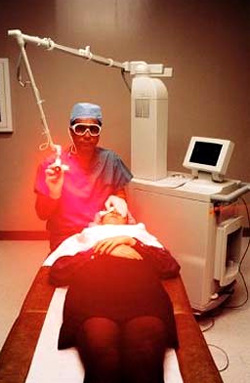
After checking vision, the nurse will dress you into sterile shoes, bathrobe and cap, cleanse the area around the eye with a special solution and will spend into operational. You have special anesthetic drops in your eyes, then insert the eyelid - a device that allows you to keep the eye open during the operation.
The doctor will program an excimer laser according to your data. After that, a special tool will be installed on the surface of the eye, which will separate the flap from the cornea and will assign it to the side. You will not feel anything.
After that, the doctor will ask you to look at the red light in front and, if possible, do not move the eye. If you move - nothing terrible, the beam will simply turn off. Just with frequent turns off the beam, the operation will take longer.
The impact of the laser can last up to 10 minutes. Pain or any unpleasant sensations will not.
Previously separated flap returns to the place at the end of the procedure, and you give you some time to relax with eyes closed.
The eye is then examined on a special slot lamp - this is quality control. After that, you have special drops and, perhaps, you will apply a protective bandage or put on a special lens.
In principle, after a couple of hours after surgery, you can use normal vision (and it is better to spend these a couple of hours in the clinic). But it can be slightly blurred, and certainly unusual - so our website advises to ask for relatives or friends to accompany you home. It is also not recommended on the same day to get driving.
Postoperative period
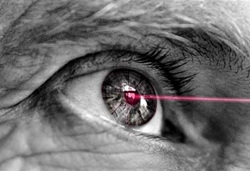
From adequate behavior in the postoperative period, your vision depends no less than actually from the laser correction itself. First of all, you need to literally fulfill all the advice of your doctor. From leaving the clinic and to the medical inspection do not touch the eye. Do not drink alcohol at least first time (especially if you drink antibiotics). Perhaps you have to displacing a special protective Contact lens - In this case, it will be given it to you (and caught) in the clinic. As already mentioned, at least three days after laser correction of vision, it is better not to wash your hair and not wash away in order to avoid infection. In the event of any unusual sensations in the eye or drop view, you need to immediately contact the clinic.
Two weeks after the operation can not be rubbed eyes, you need to avoid bright light (use sunglasses and not drive a car in the evening), do not use cosmetics for eyelashes and age. Our site draws your attention that after laser correction of vision, it is worthwhile to avoid falling into the eyes of chilled or superheated air (not standing under the air conditioning, in winter sit at home, do not look into the working oven and T.D.)
A month after the operation can not be engaged in contact sports, swim in the pool, visit the sauna. There are also some other restrictions - they should be discussed with the doctor.
But in general, a month after the operation, you can return to the usual way of life - if you do not wish to exclude from it what is harmful and healthy eyes, of course.

